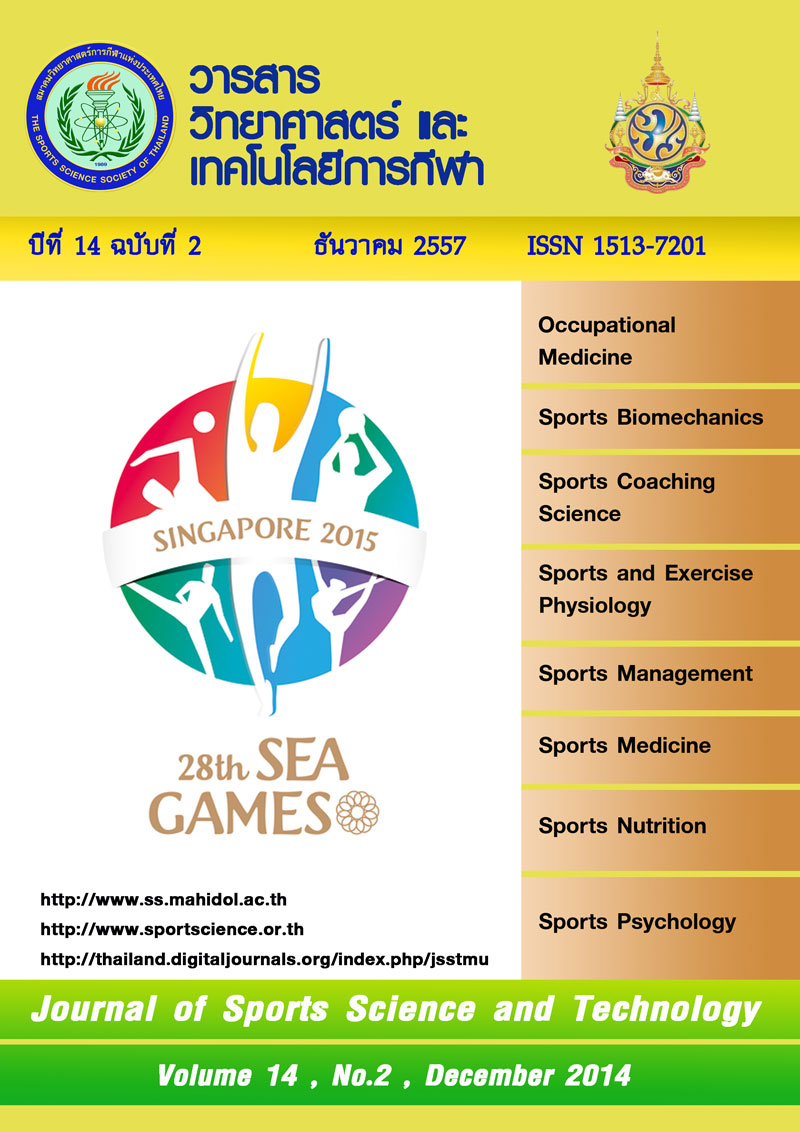EFFECT OF PLYOMETRIC TRAINING ON AGILITY OF FUTSUL PLAYERS.
Keywords:
Plyometric Training, Agility, Futsal Player, forward jump, sidestanding jumpAbstract
The purpose of this research was to study and contrast the effect of Plyometric training on agility of
futsal players. Thirty subjects were simple random sampling from male futsal players of The Institute of
Samutsakorn, age 17 – 22 years old. Subjects were randomly assigned into 3 groups with 10 subjects in each
group. The control group performed only futsal training program. The first experimental group performed
established forward jump and futsal training program. The second experimental group performed established
sidestanding jump and futsal training program. Subjects were trained 3 days per week for 8 weeks. All of the
subjects were tested for Illinois agility test at the beginning of the study and after the 4th and the 8th week to
training. Data were analyzed of mean, standard deviation, one-way analysis of variance, one-way analysis of
variance with repeated measure, two-way analysis of variance with repeated measure and followed by using
the Tukey’s multiple comparison test. Results were considered significantly difference when p < 0.05.
The results of the study showed that agility of futsal players of three experimental groups after the 8th
week of training program was not significantly different. In addition the control group after 8th week of training
showed significant difference from before training. First experimental group after the 4th and the 8th week of
training comparing with the 4th and the 8th week before training was significantly different. For the 2nd
experimental group, there was significantly difference between the 4th week of before & after training, as the
same as the 8th week of before and after training. From this study, the effect of these two ways of training
(before and after training) could increase the agility of Futsal players effectively. The trainer, therefore, could
later select the appropriate program for the players.
(Journal of Sports Science and Technology 2014;14(2): 53-63 )






